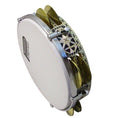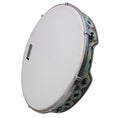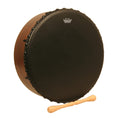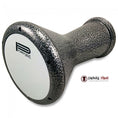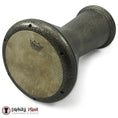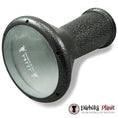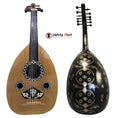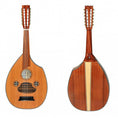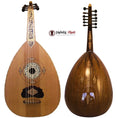- No products in the cart.
Turkish Plastic Ney- How to choose the best one
10
Jul
Ney is also pronounced as "Nai," "Nye," or "Nay," which is derived from a Persian word that means "Reed." The instrument is known as "Qassaba" in Arabic and is one of the most common Sufi instruments. It is an end-blown flute primarily popular in the Middle Eastern music tradition. You might be surprised that Ney is as ancient as the pyramids.
The Archaeological excavations in Ur, Iraq, have unearthed the remains of Ney players and Neys' remains. Therefore, it's evident that this instrument has been played for the last 4,500 to 5,000 years and is still in use.
Discovering more about the relic instrument
The simple instrument is handcrafted with a piece of hollow cane or reed and comes with Five to six finger holes. Nevertheless, you may find modern Ney's made from metal or PVC.
Arabic and Turkish nays have seven holes, one of which is often closed with the thumb on the back. If you play a D, you can quickly produce a D sharp by moving your lips and blowing harder. While, if you move the instrument and blow more forcefully, you can even play an E. Typically, the thumb hole permits playing four notes. These notes correspond to the Doga (D) nay: A, Bb, B3/4, and B.
Arabic and Turkish nays are played by placing the lips at one end of the flute and blowing obliquely towards the tube. The sound is produced by air bouncing off on the inner side of the flute, like blowing over a bottle.

What makes Turkish Ney so phenomenal?
The Turkish Ney is a simple yet the most exceptional instrument that comes with a three-octave range. The instrument is mainly categorized by length and can produce lower tones than its Arab counterparts.
There are seven finger holes on the Turkish Ney, six on the front, and one on the rear. To play the instrument, you must keep one hand on the top and your thumb at the hole on the back. While playing it, don't forget to keep the Ney inclined to the left or right.
The mouthpiece, also known as a Baspare- Bashpare, makes the Turkish Ney unique from other available Ney variants. The flute must be at such an angle that a small air stream can be blown from the center of the lips, so it hits the inner edge to the left or right to create a melodic sound.
Traditionally constructed of buffalo horn, ivory, or ebony, many contemporary Baspare- Bashpares are now manufactured of plastic or PVC.
Where to find the best Turkish Ney?
You can avail the contemporary version of Ney only at Darbukaplanet.com. Our instrument is made from high-grade PVC and is exceptionally robust and user-friendly.
Any Ney player would love to bring home our Turkish Ney, which has a variety of tones, a sturdy body for durability, and the most pleasant playing experience.
At Darbukaplanet.com, you can get Turkish Plastic Ney of the highest quality that has been expertly built and fine-tuned to provide the most melodic sound. Don't worry if finding the finest Ney seems challenging; we are here to assist you.
Notes to remember
Yildiz (Do), Mustahsan (Do #), Broom (Re), Bolahenk (Mi), Davut (Fa), Shah (Sol), Mansur (La), Kiz (Si)
- Sol= 45cm/17''
- Fa= 50cm/19''
- Mi=52cm/20''
- Re= 58cm/23''
- Do= 66cm/26''
- Si= 70cm/27''
- La= 78cm/30''








